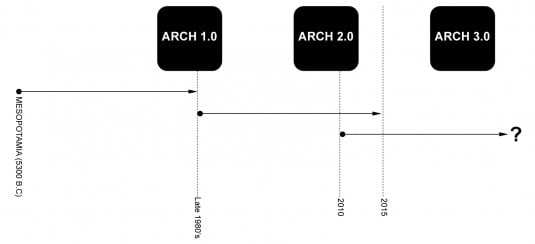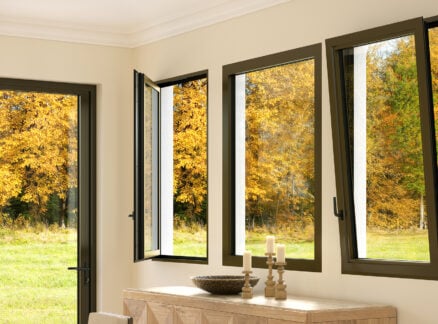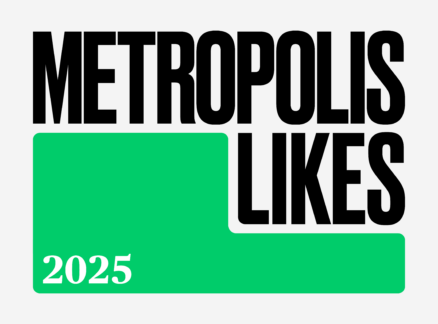
November 17, 2012
The Role of Software in Creating Sustainable Buildings
Software plays a growing role in creating sustainable buildings.
Architecture is dominated by software, from pre-concept to construction administration. This is doubly so with sustainability – only with the advent of whole building simulation and building information modeling (BIM) could energy modeling, computational fluid dynamics, and daylight analysis be rigorously forecasted. These predictive simulations provide the necessary data to determine everything from indoor comfort to energy cost savings to potential glare on computer screens Yet, it seems that architecture is falling short as new applications and devices are created everyday. Is architecture able to embrace this change fast enough to advance the future of building design, or will it lag behind?
If you don’t know what Grasshopper is (or think it’s a reference to Kwai Chang Caine), you are already in the wastelands of the digital age. It is one of the leading factors of Architecture 3.0, the second computational revolution for building design. This new phase is shortening the design process from months to days , and allowing a new generation to envision, design, and execute major projects with a single laptop. The era of hand drawing lasted for thousands of years, until the late 1980s. That was Architecture 1.0. In the early 1990’s, AutoCAD and MicroStation shepherded in Architecture 2.0, the first computer-based upheaval in architecture. Truth be told, the first CAD programs weren’t much more than hand drafting with a mouse. Around this time is when the history of energy modeling began too. The first serious energy analysis tool was DOE-2. It was the transitioning point from having to calculate the sizes of HVAC equipment by hand to allowing for complex weather data to be integrated into the calculations. DOE-2 is still used, and is a favorite platform for many mechanical engineers, but it isn’t very user friendly or easy to learn. You have to be a mechanical engineer to even turn it on.

Since DOE-2 and CAD were introduced, a lot has changed. We’ve gone from seeing the world as flat to seeing it as 3D virtual model space. Five years ago, BIM was new and shiny, but today even that is old hat. This is because BIM, CAD, DOE-2 and other Architecture 2.0 systems are really only about production, i.e. creating construction documents. Clearly, if you compare BIM to CAD the difference is apparent. BIM lets you build the project in virtual space, and all of your required documents (like sections, elevations, details and schedules) are a keystroke or command away. With CAD, you have to create each drawing separately – which is time consuming and an administrative nightmare. BIM is practical and enhances Architecture 2.0, but doesn’t change the paradigm for design. Architecture today isn’t driven by breakthroughs in practicality, but by better graphic utilities and the development of next generation analytic tools. In terms of graphics, first came Photoshop and 3DMax, then Rhino and After Effect. Later Final Cut Pro, SketchUp, and iMovie were added to the mix. These motley platforms pulled architecture from the belly of applied science and put the power of imagination back into customized edifice design. With these less practical-focused programs, you have everything you need to turn an an idea into a 3-min realistic animation complete with moving clouds, sun flares, and birds. YouTube showcases the best and worst of where cutting edge design is taking us. Energy modeling is often at the end of the design process, where it’s a passive participant. Designers want it to be more than a slow, late-stage evaluation tool. However, DOE-2 can’t add anything to a super rich flythrough or assist in creating presentation quality images. A big question is how, and if, production, graphics, and sustainability can be housed all together as a single platform. Can BIM go beyond being an instructional tool? Can technologies like Rhino or After Effects become more than a pathway to architectural eye candy? The answer to these questions is where Architecture 3.0 really begins to take form. If we can’t answer them in the affirmative, the digital age may throw architecture into the waste heap of history.

Image courtesy of Chambers Design
For Architecture 3.0 to come alive, energy modeling and other sustainability-minded analyses need to be used as early as pre-conceptual, conceptual, and schematic phases. Second, programs that evaluate climate, energy, and comfort need to be used as often as Revit or Rhino is used today. Sustainability is primarily focused on energy consumption at the moment. This is largely due to the fact that fuel costs are up, energy cost savings are tangible and the world has a new awareness of climate change and energy independence. Water, biodiversity, and ecology will need to be active design criteria for a true paradigm shift to happen. Certification systems such as LEED have required projects to show whole building simulations as evidence of energy cost savings. Energy consumption is as important today as programmatic or aesthetic issues, but it is rarely given the same amount of attention. Tools like eQuest and Energy Plus have made energy modeling easier and user-friendly. eQuest is a model based system. Energy Plus is made in the image of DOE-2, with no virtual space interface. Both are powerful tools, and are used extensively throughout the United States by engineers, consultants, and architects alike. However, both are quickly becoming outdated.

Image courtesy of Chambers Design
Where current energy modeling systems (eQuest, Energy Plus, and DOE-2) evaluate one building at a time, Architecture 3.0 wants to evaluate hundreds, if not thousands of design options for a single component of a building, such as glazing percentages, orientation or solar gain exchange. During a net-zero analysis my company was leading, we evaluated 1,240 different façade options for a single building to determine the impact of the climate on heating and cooling loads. The exercise was intended to marry qualitative and quantitative outputs. The standard Architecture 2.0 system would take months to evaluate so many options. For us, it was a matter of hours. Only with packages as Rhino + Grasshopper and a plug-in for Ecotect, or using IES-VE Pro modules (the software we used for the net zero project) can you expect to do these hyper-evaluations.

Image courtesy of Chambers Design
We need to be able to evaluate much more complex systems and inputs to redesign and rethink our society. For example, climate is changing, however all of the energy modeling software is based on historic weather information. Other types of data such as ecosystem services, ecological history, hydrology, biodiversity, demographics, crime rates, property values, and topography are missing from the design tools of today. We can’t even talk about extreme amounts of data inputs when many of today’s packages can’t run on mobile devices like iPads or smartphones, and are big and often slow. This is only the beginning of Architecture 3.0.
Neil Chambers, LEED-AP is the CEO and Founder of Chambers Design, a research-based, contemporary design company, focused on next generation architectural and technological solutions based in DUMBO Brooklyn. He is the author of Urban Green: Architecture for the Future . Neil’s work includes urban design, green building design, energy assessment, master planning and habitat restoration. He is interested in the relationship between ecosystems, ecological services, buildings and infrastructure. He has taught at NYU and FIT as well as spoken throughout the United States and around the world.





